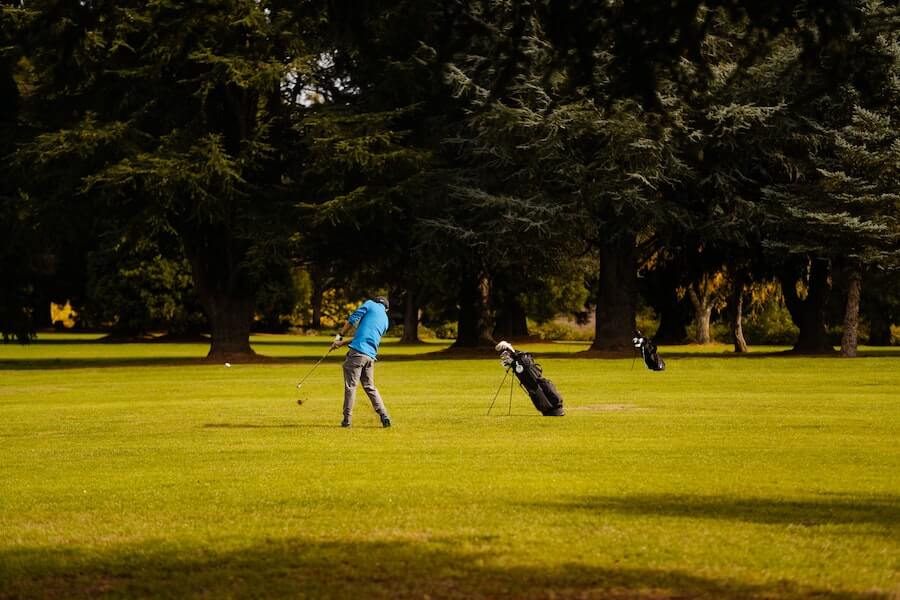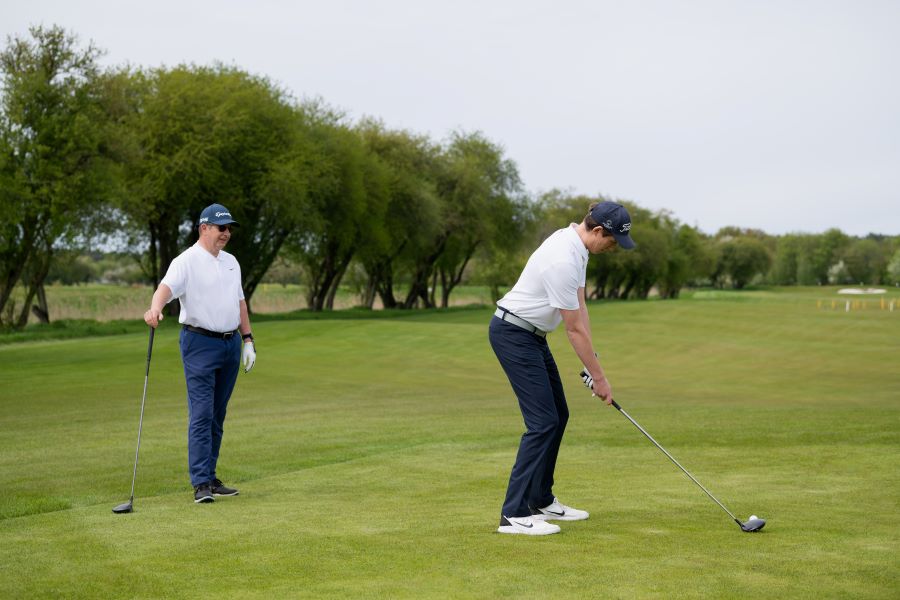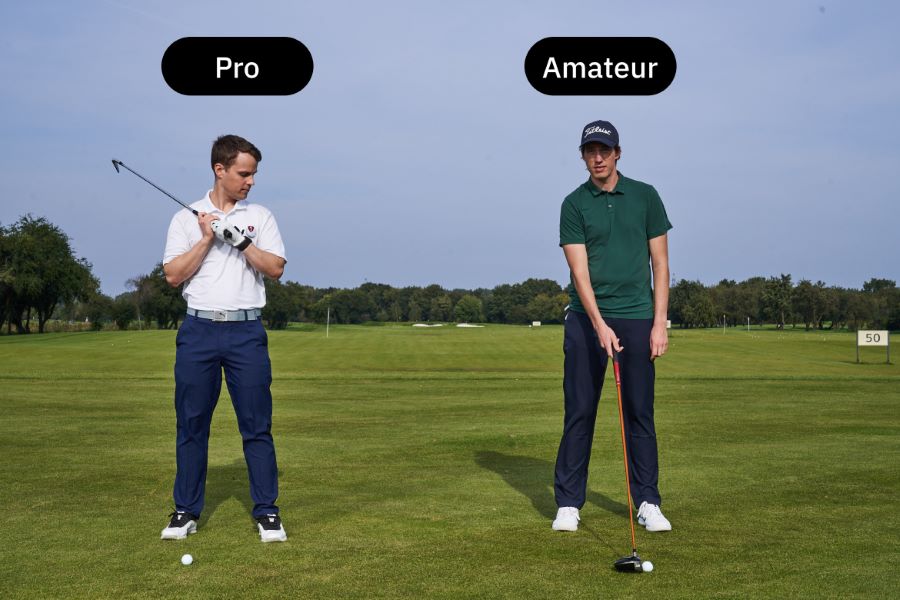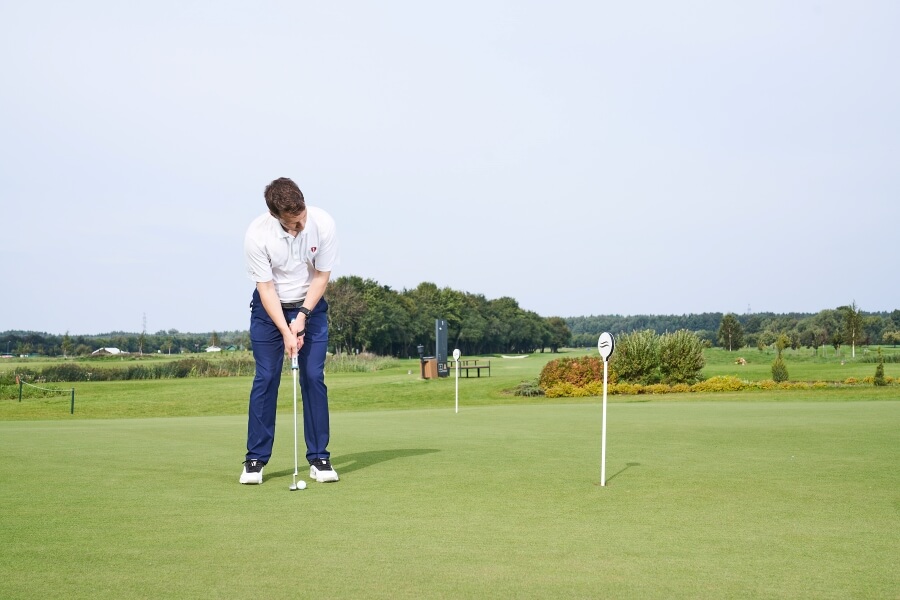The 9 Golf Mental Tips that Give You the Psychological Edge On the Course
Golf mental tips are essential for maintaining focus and reducing anxiety on the golf course. In this post, I share 9 mental tips for golf that I’ve used in the 29 years of playing the game.
These tips are built to help you eradicate the memories of past shots, keep calm, happy, and fighting until the 18th green.
After reading these golf mental tips, you’ll learn why it is vital to stay in the present and take one shot at a time.
Plus, you’ll understand how a pre-shot routine helps you reset before each shot and focus only on the task at hand.
Summary of Mental Golf Tips to Keep Calm
- Prepare Your Bag in Advance to avoid rushing and stressing before your round.
- Stay in the Present to avoid external distractions.
- One Shot at a Time is easier to focus on than an entire round.
- Pre Shot Routine removes the memory of the last shot and promotes focus on the next one.
- Plan Your Hole From the Tee for optimal positioning and reduced stress.
- Embrace Noise to avoid letting it impact your shot.
- Never Give Up because a round is played over 18 holes, and anything can happen.
- When in Doubt Hit More Club to remove worry and promote a smooth swing.
- Enter Your Happy Place to calm the nerves when frustrated.
The 9 Best Mental Golf Tips for a Calm & Focused Game
1. Prepare Your Bag in Advance
Preparing my golf bag pre-round is vital to keeping me relaxed and giving me ample time to warm up once I arrive at the golf course.
If your bag is unorganized and you don’t have sufficient balls, tees, markers, and refreshments, you rush to get what you need. Instead, you can stretch, focus on breathing, and mentally prepare for the round ahead.
Nothing causes panic faster than realizing you’re running out of golf balls with multiple holes still to play. Immediately, you stop focusing on your round and start worrying about your ball count. That’s why preparing in advance keeps you focused to avoid unnecessary stress.
Before you travel to the course, inspect your bag and ensure you have sufficient stock of balls, tees, and markers. Moreover, check the weather and pack the relevant apparel to keep cool or warm, dry, and comfortable in all conditions.
Read More: How to Prepare For a Golf Tournament.

2. Stay in the Present
When on the golf course, you only have one job. Get around the golf course in as few shots as possible.
We need maximum focus for 18 holes to optimize our swing mechanics, alignment, and short-game control to deliver the lowest round possible.
You’ve got to stay in the present and forget about external factors like your career or family challenges. When you start thinking about those challenges, your concentration lapses, and your round starts to fall apart.
I suggest switching off your mobile phone to prevent emails or text messages from distracting you during your round. Staying in the present also helps you forget the last shot and focus on the task ahead.
The best approach to staying in the present is to conduct breathing exercises whenever you think about past events or external factors. I tend to breathe in deeply for 5 seconds, hold it for 2, and breathe out for another 5 seconds. I repeat the process until my head is clear and I am present in the current moment.
3. One Shot at a Time
My one-shot-at-a-time approach complements the staying-in-the-present mentality.
Many amateurs start estimating scores and thinking about where they will pick up birdies or avoid bogeys on the first tee. This obliterates your focus on the current shot and leaves you susceptible to a mishit.
Instead, focus only on the shot ahead of you, giving it the attention it deserves.
You know how far you have to hit the ball, and you’ve picked out an intended target. Your sole job at this point is to get the ball from its current position to near your target. There should be nothing else on your mind.
Obviously, your end goal is to shoot a specific score, but you cannot achieve that if you don’t score adequately on each hole. Finally, you can’t card desirable scores on each hole when you hit a few poor shots because you lose concentration.
I focus on one shot at a time by implementing breathing exercises when distracted, using my pre-shot routine every time. I’ll take you through the pre-shot routine in the next section.

4. Pre Shot Routine
A pre-shot routine is integral to each shot because it helps golfers forget about the last strike and envision the one ahead. Operating without a pre-shot routine sees you transition from one play to another without any break, resulting in limited focus and the outcome of your last hit fresh in your mind.
I often see amateurs lose their cool around the green after a duffed chip shot or easily missed putt.
Instead of taking a few seconds to regather their composure, they walk up to the ball and hit it aimlessly, leading to further disaster. Although a duffed chip shot can irk the coolest of heads, try avoid making a bad situation worse.
Every golfer has a different pre-shot routine. I urge you to find one that is easy to replicate on every shot for improved consistency. For example, I approach the ball, place my left hand behind my back and look over my shoulder, parallel to my target.
Next, I check if my clubface is square to the desired target, and back away and stand behind my ball. I do this to picture my ball flying on the intended line and landing next to my target.
Finally, I address the ball again, generate two practice swings, look at the target once more, and swing.
Overall, this process takes me 20 to 30 seconds from start to finish to avoid slowing play down. I find it’s sufficient time to clear my mind and prepare for my next shot.

5. Plan Your Hole From the Tee
Earlier, I recommended focusing on one shot at a time and planning your hole from the tee helps you achieve this. While waiting for your playing partners to arrive on the tee box or hit, think about your strategy to get from the tee to the green.
Knowing where you want each ball to finish helps you focus solely on achieving that objective. For example, if you are playing a hole that doglegs right and struggle to hit a fade, your best option is to aim for the left side of the fairway, opening up the green on approach.
Therefore, your only mission from the tee is to focus on getting the ball to the left edge of the fairway.
Because if you miss this spot, it leaves you out of position for your approach shot and unravels your plan. That is why a strategy combined with one strike at a time is the key to a lower score.
Finally, by planning your hole from the tee, you avoid stressing about what shot to play when you get to your ball. You’re already prepared and can relax and concentrate on breathing and your pre-shot routine.
6. Embrace Noise
Golf is a sport associated with tranquility, but you won’t always enjoy silence during your shot and should learn to deal with it. Tiger Woods shared this advice with Harold Varner III in Golf’s Sub Par podcast.
Woods compared noise during a swing to reading a book with the tv on. You can still read and comprehend the plot of a book with the tv blaring in the background.
The same applies to your shot. The objective is to get the ball from its current lie to your target. Focus on making that happen, and don’t worry about the sounds.
My home course is located near an International Airport, with planes taking off and landing every few minutes. Plus, it’s teeming with fauna, and often, Harris Hawks are calling. If I allowed every sound to distract me, I’d never enjoy my round and card horrendous totals.
Instead, I learn to coexist with the noise and focus on my job without external factors hampering my performance. Worst case scenario, I’ll back off the shot, reset and restore focus before commencing my backswing again.

7. Never Give Up
Thanks to handicaps and Stableford scoring, the worst an amateur can score on a hole is a double to quadruple bogey, depending on your handicap. It helps mitigate the damage of a bad shot or poor hole on your overall scorecard, leaving you with a fighting chance of posting a tidy round.
Whenever I am consumed by a terrible hole, I return to basics, conduct my breathing exercises and continue my pre-shot routine. It clears my mind from past mistakes and helps me focus on the next shot to restore order to my scorecard.
One example that stands out for me occurred when I was a junior. I played off a 12 handicap and finished the front nine on 10 over par. Instead of being overcome with emotion, I took it in my stride and decided to play the back nine as if it were my first of the day.
I took one shot at a time and completely eradicated the horrors of my front nine from my memory. I birdied the 10th and the 14th and carded a par on the other holes, finishing 2 under par for the back nine.
As luck would have it, that was also the first time I broke 80, and it taught me that I could still score low after a shaky start.
8. When in Doubt Hit More Club
Taking more club when in doubt is one of the most effective distance control psychology tips my first coach taught me.
If you’re worried that you’ve chosen insufficient club, you will swing harder at the ball to try increase power and speed on the downswing.
Unfortunately, the result is often a topped or toothed strike that travels nowhere or skims low and runs over the green. Taking more club and gripping down on it allows you to swing smoother and shorter, prompting greater clubface control and desired shot.
For example, if you hit a 9-iron 130-yards and a pitching wedge 115-yards, you may choose an easy 9 on shots longer than 120-yards.
Read More: Wrist Action in Golf Swing.

9. Enter Your Happy Place
My final tip to place you in the optimal golf mindset is to enter your happy place when the round isn’t going according to plan. It is an effective escape method to rid your mind of negative thoughts and memories of previous slumps.
Your happy place could be anything from your favorite beach or mountain to an extraordinary moment like when you got married. If I need to calm down, I picture myself standing on Matira Beach in Bora Bora and remember how relaxed that moment made me.
A few seconds of reminiscing about that moment is all I need to put past holes and shots behind me and move on. Although Happy Gilmore was a classic comedy movie with over-the-top moments, it references the importance of “going to your happy place.”
Chubbs Petersen, played by Carl Weathers, teaches Adam Sandler, or Happy Gilmore, to overcome his frustration with external factors by picturing a joyful moment.
FAQ
How do I stop being frustrated at golf?
You stop being frustrated at golf by identifying and correcting the issues in your swing mechanics and by following these nine steps:
- Prepare Your Bag in Advance
- Stay in the Present
- One Shot at a Time
- Pre Shot Routine
- Plan Your Hole From the Tee
- Embrace Noise
- Never Give Up
- When in Doubt Hit More Club
- Enter Your Happy Place
How do I overcome golf anxiety?
You can overcome golf anxiety by doing breathing exercises, entering your happy place, and playing a pre-shot routine. These factors help you completely clear your mind, putting you at ease and enabling you to focus on one shot at a time.
How do I get mentally tough at golf?
You get mentally tough at golf by putting poor shots behind you, focusing on one strike at a time, and employing a pre-shot routine. The faster you forget about a terrible result, the quicker you can reset and focus on striking your next one better.
Summary
Our top 9 golf mental tips equip you with sufficient knowledge to put poor shots behind you, calm your nerves and keep you focused on the next strike.
A strong mindset in golf is paramount to playing consistently and breaking your target scores.
A relaxed mind on the golf course starts at home with preparing your bag and preventing unnecessary stress before or during your round. Next, play one shot at a time to not overwhelm yourself and implode your focus. If you’re super frustrated, think of a happy memory allowing you to eradicate negative thoughts.
Finally, always remember your pre-shot routine, which gives you time to transition from the previous shot. By entering your routine, you put the past behind you and only focus on the shot you’re about to play. When these factors combine, you eradicate anxiety and enhance focus.















